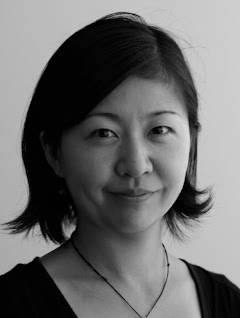Beat
I cover politics, business, features, sports, fashion, entertainment, disasters, and more…
One Shot

“I like this image of ice skaters, which I shot from above. At first, I was shooting from ground level and struggling to get a photo. I came back feeling defeated, but it crossed my mind that maybe I could get a photo from the office, which was on the 30th floor. The moment I saw the skating rink from that vantage point, I was thrilled to see the shadows cast on the ice, which was illuminated beautifully.”
Profile
My parents bought me a Polaroid camera as a birthday present when I was about eight years old – that’s my earliest memory of photography.
My first assignment was to photograph a model wearing a bra worth 15 million yen (about $117,000 at that time). I remember asking the model to pose in different ways for at least 30 minutes because I was uncertain that I had the right shot. She was nice enough to put up with me, but I learnt that a photographer should have a clear vision of the composition before the actual shoot.
One assignment that left a big mark on me was covering a Buddhist monk in Fukushima, who was fighting radiation left by the nuclear disaster on March 11, 2011, by planting sunflowers in the summer and removing radioactive dirt in the winter. He taught me that no matter how harsh reality is, there is hope as long as we act upon it.
Covering the tsunami in Banda Ache was my first foreign assignment as a photographer. I was embedded with the U.S. army and was very nervous about covering such a big event. I photographed a boy being rescued by a U.S. soldier, and a colleague told me about a month later that the boy’s father was reunited with his son after seeing my photo in a newspaper. When I learnt that, I understood how our jobs could make a real positive impact on people’s lives.
I love illustrating people’s characteristics through their daily lives. I enjoy learning about another person’s world, values and culture.
Who do I have in mind when I take pictures? People who are curious and care about the world.
My biggest lesson has been never say no. When I was told to cover the daily life of a Toyota factory worker at a time when Toyota was experiencing a global recall on its vehicles, I frankly thought that would be impossible. However, after talking to (or being ignored by) about 15 Toyota workers coming out of the factory after work, we ran into one man who spoke frankly about what he thought of the company and, surprisingly, he allowed me to spend three days with his family.
I respect the people who have allowed me to take their photos, even though there might have been no benefit to them from being photographed. For instance, a fisherman who lost his wife, mother, house and everything he cherished and worked hard for all his life in the Fukushima disaster, allowed me to take his photo. I respect his capacity to share his experience, even at times of despair, and his strength to look on the bright side.
Being a photographer at Reuters has given me many special tickets to meet amazing people and experience the world first hand. I’d like to take this opportunity to thank everyone whom I was able to meet through photography. I feel very thankful for the experiences, but even more, I hope that I have helped make the world a better place.
Behind the Scenes

